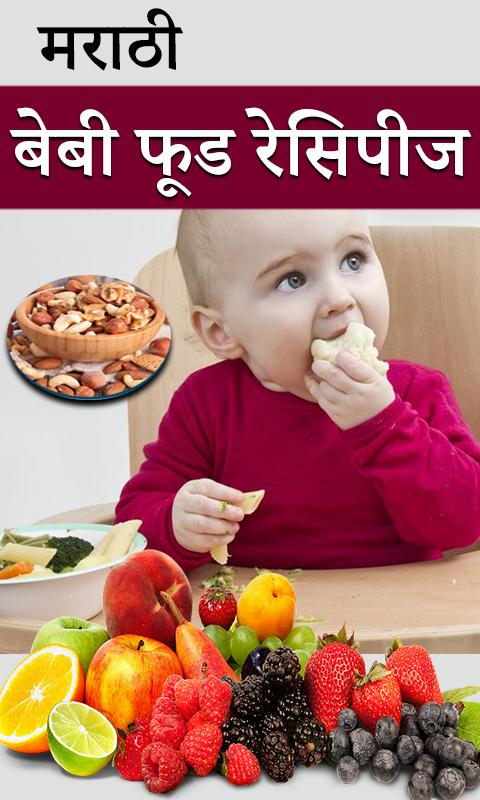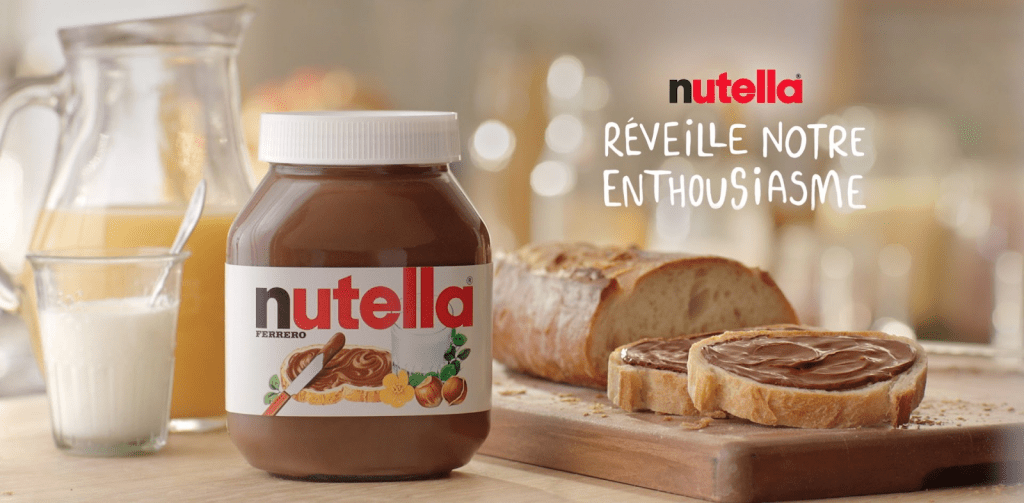Baby food weekly menu
6-9 Month Old Baby Food Puree Menu (FREE Printable)
Home » Recipes by Age » 6-9 Months » 6-9 Month Old Baby Food Puree Menu (FREE Printable)
This 6-9 Month Baby Food Menu brings new and exciting ideas to the table — literally! Know what to feed your baby for breakfast, lunch, and dinner using Stage 1 and Stage 2 baby foods. Plus, there is a free printable menu that you can use to map out your baby’s meals for the entire week!
Medically reviewed and co-written by Jamie Johnson, Registered Dietitian Nutritionist (RDN), and Lauren Braaten, Pediatric Occupational Therapist (OT).
6-9 Months Baby Food MenuAre you looking to plan your baby’s meals out for the week?
Then this meal plan is for you!
This easy-to-use meal plan guide featuring Stage 1 and Stage 2 Baby Food purees has month-to-month meal suggestions for your baby’s breakfast, lunch, and dinner.
I even included a free printable for you to print and fill out with what your baby will eat at each meal. It’s a convenient tool for use at home or to be sent to your daycare, grandparents, or caregiver’s house.
Is it your first time making homemade baby food? If you answered yes, then I suggest you start this journey by reading my in-depth Guide on How to Make Homemade Baby Food. The detailed article goes over all the essential information such as the best cooking tools to have on hand, safe storage, knowing when your baby is ready for solids, introducing purees, making the best first foods for baby, and more! You can also check out my best-selling cookbook for even more information and recipes.
How to Make Baby Food
Watch this video to see how easy it is to make your own baby food!
Frequently Asked Questions
When can baby eat purees?
When a baby can start on solids is determined by their own rate of development, which generally comes between 4-6 months of age. Some of the developmental milestones babies need to reach in order to start solids include: if your baby has solid control of their head and neck, if your baby has doubled in weight, and if your baby is reaching for or opening their mouth when you eat (see my guide here). Before you start baby on purees, you should consult with your pediatrician to make sure your child is developmentally ready.
Before you start baby on purees, you should consult with your pediatrician to make sure your child is developmentally ready.
How many ounces of purees should baby eat?
By the time baby is ready for finger foods, she should be eating around 4 ounces of food at each meal. If it is more or less than this, do not worry. Babies get most of their nutrition from formula or breast milk until they turn 1 year old.
Does baby need teeth to eat?
The question of how babies can chew foods without teeth makes any parent scratch their heads! But in reality, we all chew food with our back molars, not our front teeth, which baby doesn’t get until 18-22 months of age. Good thing babies have super tough and strong gums, which they use to mash, gnaw and chew foods. Baby’s gums are better at chewing food than you would think, and your baby will be able to chew more foods the older they get, even without their molars.
These tools will make it a lot easier to make homemade baby food purees. For more of my favorite kitchen tools make sure to check out my shop.
TOOLS NEEDED- blender or food processor
- baking sheet
- saucepans
- knives
- veggie peeler
- spatula
- freezer tray
- storage containers for fridge
- stasher bag
- reusable pouches
- baby food maker
- highchair
- suction bowl or baby bowl
- baby spoon
- open lid cup
- bib with catch pocket
- sleeved bib
- splat mat to cover the floor
2-3 Meals a Day
Aim to serve your baby 2 to 3 meals a day, and then add 2 more meals as your baby gets more comfortable with the eating process.
Start with a Small PortionStart by feeding your baby 1-2 ounces of a puree, and if they want more food, then, by all means, offer them more. However, if they turn their heads or clamp their mouths shut, take the food away and try again later.
However, if they turn their heads or clamp their mouths shut, take the food away and try again later.
You don’t want to try out new food or have mealtime when your baby is hungry. It’s best to feed your baby solid foods when they already had a little breastmilk or formula in their tummies but not when they’re too full either.
Breastmilk & FormulaBabies will continue to get most of their calories from breastmilk or formula until around one year of age. So don’t be stressed if it takes a little more time for your baby to develop their new eating skills. At this stage, feeding your baby solids is mostly for exposure and practice.
Serve a Wide Range of FoodsIt’s significant to serve babies assorted foods. Aim for lots of colors, textures, and flavors. Exposing your baby to various foods now will help them be comfortable with a wide range of foods down the road and help prevent picky eating.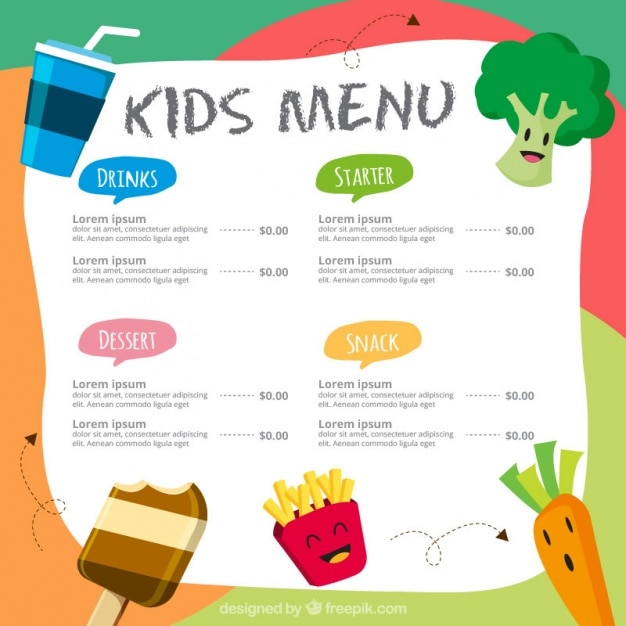
It may take your baby up to 10 times of trying a certain recipe to decide if they like it or not. So remember to keep offering them that particular kind of food, even if they push it away the first 9 times you offer it.
Be PatientSome days your baby might eat everything you put in front of them, and other days, they might refuse to open their mouths. As challenging as it may be, you just have to increase your patience with them and follow their lead. Remember that each time you sit down for a meal together is a chance to work on new skills — how to sit on a high chair, hold (and drop) a spoon, reach out, grab a sippy cup, etc. So nothing is lost even if they don’t eat a single bite of food; they are still learning.
Get your FREE Printable HERE!Download
7 Month Menu OptionsAt 7 months, your baby’s expanded palate can probably tolerate thicker purees compared to last month. However, they should still be getting the majority of their calories from breastmilk or formula.
However, they should still be getting the majority of their calories from breastmilk or formula.
- Roasted Banana + Cinnamon Puree
- Apple, Raspberry + Vanilla Puree
- Banana, Blueberry + Avocado Puree
- Full Fat Plain Yogurt mixed with Banana, Cherry + Beet Puree
- Spinach Avocado Oatmeal Breakfast Cereal
- Spinach + Apple Puree
- Blackberry + Kale + Apple Puree
- Sweet Corn, Squash + Apple Puree
- Blueberry Chickpea with Rosemary Puree
- Green Pea Hummus for Baby
- Roasted Root Veggies Puree served with Multi-Grain Probiotic Baby Cereal
- Broccoli + Asparagus Puree
- Mango + Kale Puree with Ginger
- Turkey, Corn + Zucchini Puree
- Oats, Spinach + Avocado Puree
At 9 months, your baby should be extremely comfortable with stage 2 purees and may start transitioning to stage 3 purees, which have soft chunks that babies can easily chew. By now, your baby should be eating from all of the food groups with 3 meals and 1-2 snacks a day, along with breastmilk or formula.
By now, your baby should be eating from all of the food groups with 3 meals and 1-2 snacks a day, along with breastmilk or formula.
- Strawberry Quinoa Breakfast Cereal
- Blueberry Oatmeal for Baby
- Apple + Mint with Cottage Cheese
- Cherry, Banana + Raspberry Puree
- Spiced Pear Oat Puree
- Sweet Potato, Carrot, Cauliflower Puree with Chia Seeds
- Carrot, Corn + Pumpkin Puree
- Apple, Spinach + Pea Puree
- Superpower Green Puree
- Thai Chicken Puree with Mango
- Beef + Sweet Potato Puree with Thyme
- Sweet Potato, Beets + White Beans Puree (can be served chunky)
- Chunky Summer Veggie Pasta for Baby
- Peach Rice Pudding for Baby
- White Fish + Carrot + Leek Puree
Baby Menu PrintableDownload
Baby Meal Plan: 6 to 9 Month Old
What should you know about feeding your 6- to 9-month-old?Learn about how to introduce solid foods to your baby
Know that what foods you introduce now help influence baby’s preferences in the future
Explore menus that help you understand the transition from purees to soft solids
Starting solid foods is an exciting time for you and your baby. The American Academy of Pediatrics and the World Health Organization recommend introducing solid foods around 6 months of age.1, 2 Check out our signs of readiness article and speak with your baby’s pediatrician to help determine when your little one is ready to start solids.
The American Academy of Pediatrics and the World Health Organization recommend introducing solid foods around 6 months of age.1, 2 Check out our signs of readiness article and speak with your baby’s pediatrician to help determine when your little one is ready to start solids.
While starting solids, you will continue to provide most of the essential nutrition and hydration your baby needs from breast milk or formula, while also exposing your baby to a new world of diverse flavors and nutrients. In fact, this is one of the most influential periods in your baby’s taste development.3, 4 Your baby will most readily try and accept all kinds of foods at this age so it’s important to offer a variety of different flavors from meal to meal.
There are two meal plans below: One for starting solids with purees, and one for when your little one starts to advance textures. Both have snack and recipe ideas to help you get started. They also have plenty of flavor variety to help maximize your baby’s taste
development.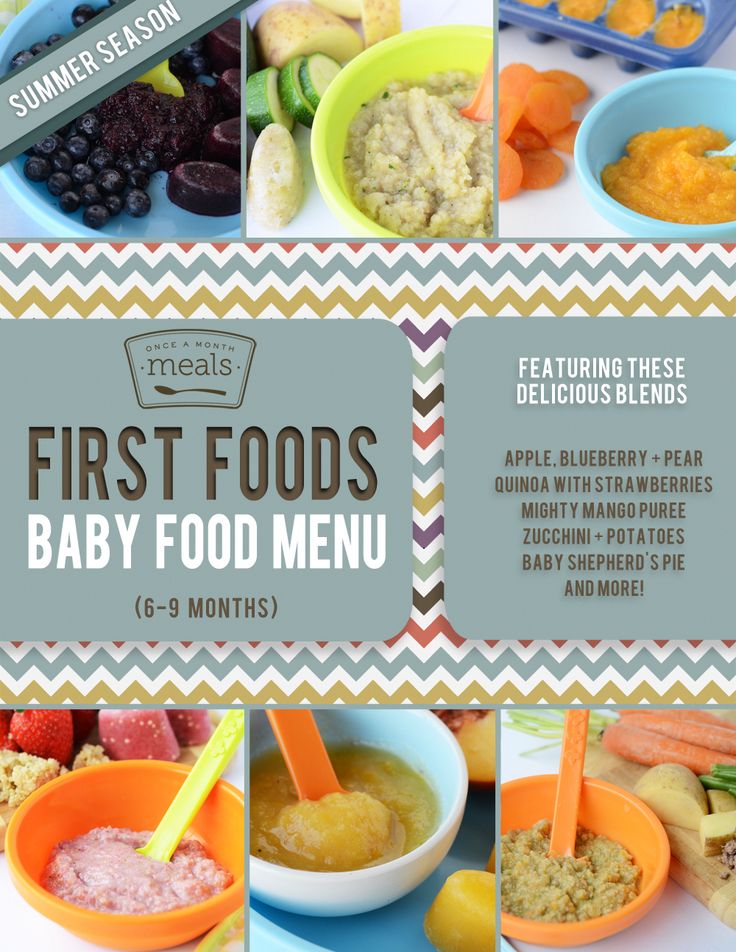
Read more: Learning to Love Healthy Foods
Pro tips for 6- to 9-month-old baby meal plans:Eating solids at this age is mostly about letting your baby explore new flavors and textures. Breast milk or formula will remain your baby’s primary nutrition source during their first year, so continue to give breast milk and/or formula just as you were before starting solids. Your little one will begin to reduce how much formula or breastmilk they take as they get closer to 1 year.5, 6, 7
For breastfed babies, introduction of solids at 6 months helps your little one get enough of certain nutrients. For example, at 6 months stored iron begins to diminish. Since breast milk is not a good source of iron, including some iron-rich foods, such as fortified cereals and pureed meats, will help your little one get enough.8 For more information, chat with baby’s health care provider for their recommendations.
For more information on the nutrient needs of your older baby, check out: Nutrients to Look for at 6-12 Months
How much should I feed my baby?
At around 6 months old, you can start by offering 1 to 2 tablespoons of food once or twice per day. Once your little one gets the hang of eating and shows more interest, slowly begin offering foods 2 to 3 times per day and ¼ to ½ cup at a time.9, 10
Once your little one gets the hang of eating and shows more interest, slowly begin offering foods 2 to 3 times per day and ¼ to ½ cup at a time.9, 10
Remember to listen to your baby’s hunger and fullness cues throughout their feeding journey, rather than go by specific portions. Your little may take more or less each day; by responding to their feeding cues you’ll be providing them with just what they need.11
It’s important to advance texture once your baby is comfortable. Start with thin, pureed foods, thickening them a bit as baby gets used to eating. Next, move to lumpy, mashed foods; followed by finely chopped, soft foods.12
Read more: Introducing Solids: First Foods & Textures
Introduce one single-ingredient new food at a time
Allow for 2 to 3 days before introducing another new food to make sure your baby is not allergic or intolerant to these foods. Foods most often associated with allergies are eggs, soy, peanuts, tree nuts and seeds, wheat, fish, shellfish, and cow’s milk (drinking cow’s milk is not recommended before 12 months, but milk can be used in small amounts in baked or cooked foods, and baby can also eat yogurt and cheese as long as there is no allergy or intolerance).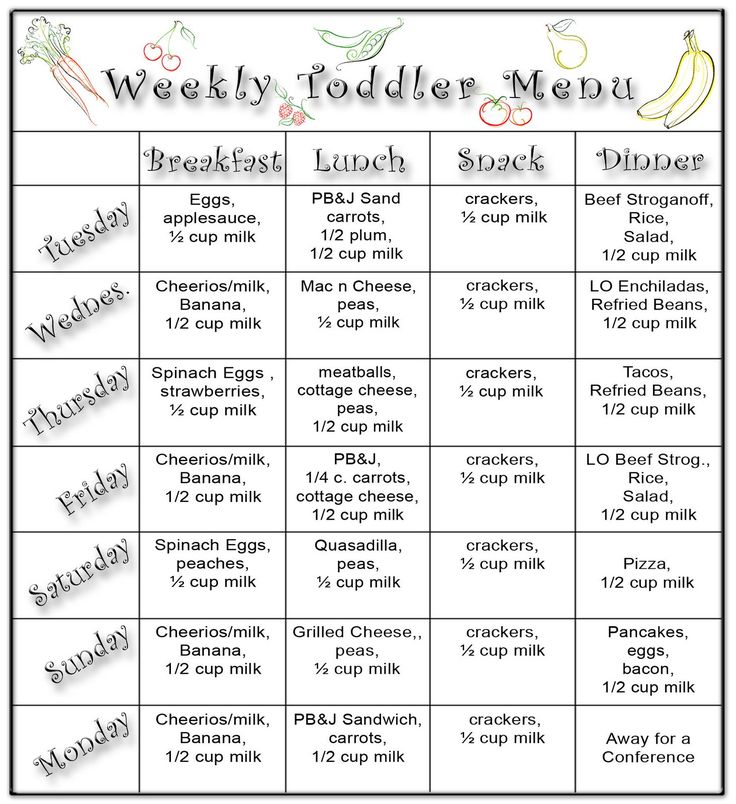 13
13
Read more: Introducing Major Food Allergens to your Infant
By 9 months of age, your baby should be eating foods from all food groups and be able to handle small, soft pieces of finger foods. Pay attention to your baby’s cues, have fun, and let your baby set the pace while offering your baby healthy foods that contain important nutrients to set the standard for healthy eating patterns.
Baby doesn’t like a food? Try, try again!
Your baby may grimace, wrinkle their nose, or make other faces when they try new foods and textures. Know that this is completely normal and doesn’t mean your little one dislikes the food or is being picky. Babies may need to taste a food up to 10 or more times before they start to accept it, so just keep offering (though not forcing) that food.14
Remember, starting solids is mostly about introducing a variety of flavors and textures – and keeping it fun and stress-free!
If you have questions about introducing solids or advancing textures, reach out to our team of registered dietitians for free! They are here to help on our free live chat from Monday through Friday, from 8am–6pm ET.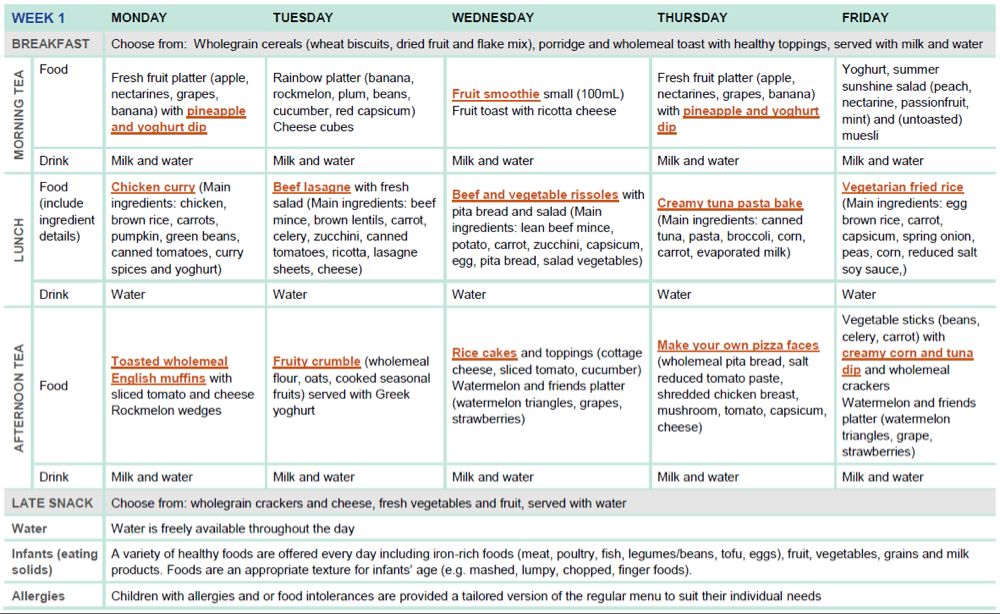 Chat now!
Chat now!
Around 6-month old meal plan: First foods and purees
Breakfast:
Option 1: Whole Ancient Grain Baby Cereal
Option 2: Mashed avocado
Option 3: Avocado and Pea Puree
Option 4: Apple and acorn squash mash (pureed apples and squash mixed)
Option 5: Pureed peaches or soft cooked pears
Lunch:
Option 1: Root Vegetable Puree
Option 2: Unsweetened whole milk yogurt
Option 3: Avocado and Pea Puree
Option 4: Pureed apples
Option 5: Quinoa cereal
Dinner:
Option 1: Mashed “Banacado” (banana and avocado mashed together)
Option 2: Baby Muesli with Peach Yogurt
Option 3: Tropical medley (mashed papaya and mango)
Option 4: Garden veggie and fruit combo (mix mashed/pureed apples, spinach and peas)
Option 5: Beet and Cantaloupe Puree
Breakfast:
Option 1: Unsweetened yogurt with mashed peaches
Option 2: Oatmeal cereal
Option 3: Whole grain waffle strips
Option 4: Orange Sunny Soup
Option 5: Soft scrambled egg
Lunch:
Option 1: Soft cooked whole grain pasta with olive oil and parmesan cheese
Option 2: Slivers of turkey with peas
Option 3: Unsweetened applesauce and shredded or cubed cheese
Option 4: Chickpea and Carrot Spread
Option 5: Cottage Cheese with Cinnamon and Diced Strawberries
Dinner:
Option 1: Soft cooked slivers of chicken, with steamed carrots
Option 2: Ginger Carrot & Sweet Potato Mash + Lean Beef
Option 3: Small chunks of low mercury fish, like cod
Option 4: Soft steamed chunks of broccoli or green beans
Option 5: Lumpy, mashed kidney or black beans
We know parenting often means sleepless nights, stressful days, and countless questions and confusion, and we want to support you in your feeding journey and beyond.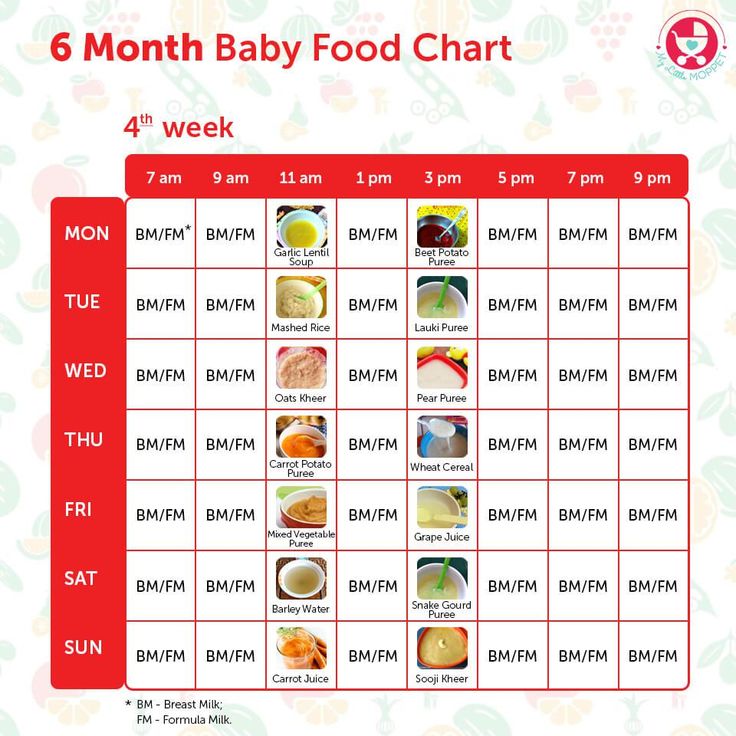
Our Happy Baby Experts are a team of lactation consultants and registered dietitians certified in infant and maternal nutrition – and they’re all moms, too, which means they’ve been there and seen that. They’re here to help on our free, live chat platform Monday - Friday 8am-6pm (ET). Chat Now!
Read more about the experts that help write our content!
For more on this topic, check out the following articles and recipes:Starting Solids: Purees versus Baby Led Weaning
Starting Solids: Baby Led Weaning
The Division of Responsibility: Helping Avoid Picky Eating
Feeding Tips for Healthy Weight Gain in Babies and Toddlers
Our meal plans offer recipe and meal suggestions for your child. They are not designed to replace your doctor’s recommendations, nor do they take into account special nutritional needs, including allergies and intolerances. The meal plans suggest serving sizes that may or may not be appropriate for your child. Please consult your doctor to determine what is best for your child.
Please consult your doctor to determine what is best for your child.
example of a weekly diet, calorie content and principles for compiling
Lilia Ostapenko
By Daily Baby
#nutrition #kindergarten
Many of us remember the unique aroma of the kitchen that we met at the entrance to the kindergarten. Someone remembers with horror semolina porridge for breakfast, and someone is looking on the Internet for a recipe for a casserole or an omelet “like in kindergarten”.
Food in the preschool, children's menu, dishes and products included in it is one of the concerns of parents who decide to send their child to a municipal kindergarten. nine0003
Kindergarten menu in any preschool institution in our country is strictly regulated by SanPiN norms. The main requirement for the menu is that food fully provides the growing body of the child with the nutrients necessary for the normal growth and development of the child. Making a kindergarten menu is a real science. After all, dishes for the children's table should be not only tasty, but also healthy, give energy for the whole day.
After all, dishes for the children's table should be not only tasty, but also healthy, give energy for the whole day.
Kindergarten menu principles
As mentioned above, the norms and principles by which the kindergarten menu is compiled are strictly regulated.
The daily diet for preschoolers should be varied and include meat, fish, milk and dairy products, eggs, butter, vegetables and fruits, bread and cereals.
The exclusion of one or more food groups from the children's diet leads to the fact that children have a decrease in concentration and energy, they may get sick more often and complain of digestive problems. Products are combined in such a way that dishes are not repeated within 10-20 days - the nutrition of preschoolers should be not only correct, but also varied. After all, there is nothing more boring than eating semolina porridge every day for breakfast. nine0003
Preschool cooks are not Michelin stars, and you need to understand that there will be no dishes from the restaurant menu in kindergarten. But there will be dishes tried for years and generations of pupils: cereals, casseroles, steam cutlets, soups. In addition, age characteristics are also taken into account when serving - for kids from the toddler group, pieces and portions will be smaller, and possible allergens, such as oranges, will be excluded from the menu.
But there will be dishes tried for years and generations of pupils: cereals, casseroles, steam cutlets, soups. In addition, age characteristics are also taken into account when serving - for kids from the toddler group, pieces and portions will be smaller, and possible allergens, such as oranges, will be excluded from the menu.
The grocery list for the kindergarten menu is compiled in such a way that one group of products can easily replace another without losing calories. For example, a chicken can be replaced by a turkey, some vegetables can be replaced by others, and so on. nine0003
It is important to note that the diet of preschool children should not include canned food, pickled foods, meat from wild animals, dairy products with vegetable fats, carbonated drinks, fried and spicy foods.
Diet calorie content and age characteristics
The calorie content of meals in kindergartens directly depends on age. The calculation of caloric content is carried out for two groups: children 1. 5-3 years old, and children 4-6 years old.
5-3 years old, and children 4-6 years old.
If for the first age group the calorie content is 1550 kcal, then the children of the older age group of the preschool educational institution should receive at least 1900 kcal per day. It is important to note that all meals in kindergarten should contain up to 30% fat, up to 15% protein and up to 55% carbohydrates in the total value of the diet. These standards were developed by the Institute of Nutrition of the Russian Academy of Medical Sciences.
Meals differ in their calorie content. Breakfast in kindergarten should be 25% of a child's daily calorie requirement, depending on their age group. Lunch and afternoon snack are 40% and 15% respectively. Therefore, if a child has dinner at home, and not in a kindergarten, parents should create a menu for this meal so that the baby gets the remaining 20-25% of the calories he needs. nine0003
It is important to note that the dishes are recommended to be prepared just before they are consumed.
Food that has stood for more than two hours is considered unsuitable for children's cuisine.
According to current standards, the daily menu of the kindergarten should consist of 5 meals, and three meals should contain hot dishes, because healthy digestion and proper metabolism are impossible without hot food. Hot meals are required for all children who spend more than 4 hours a day in a preschool institution (whether municipal or private). nine0003
Also, according to pediatricians, a preschool child should eat every 4 hours. This important rule is also taken into account when compiling the menu in kindergartens. Below is an average meal schedule in preschool institutions:
- 8.30-9.00 — breakfast;
- 10.30-11.00 - second breakfast;
- 12.00-13.00 - lunch;
- 15.30-16.00 - afternoon tea;
- 17.00-17.30 - dinner.
Legal regulations and innovations
The director of the kindergarten can decide what foods and dishes to feed the children, but on condition that the new menu complies with the requirements, all documentation, and if the pupils of the kindergarten receive the calories necessary for their age.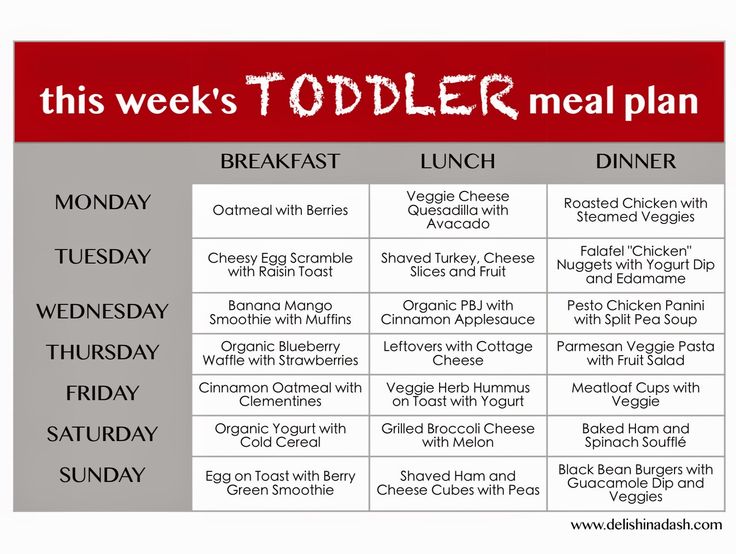 In addition, if desired, parents can familiarize themselves with the menu, which is compiled for at least 10 days. If questions or non-legal situations arise, parents have the right to seek advice from the regional Rospotrebnadzor. nine0003
In addition, if desired, parents can familiarize themselves with the menu, which is compiled for at least 10 days. If questions or non-legal situations arise, parents have the right to seek advice from the regional Rospotrebnadzor. nine0003
The municipal kindergarten is supplied by the company that won the tender for the supply. However, each product that enters the kindergarten kitchen must have a quality certificate, all necessary invoices and veterinary certificates.
At the moment (since January 2021), a number of changes have come into force in the organization of the menu in kindergartens. There are more than 15 changes in SanPiN 2.3 / 2.4.3590-20, and one of the most important is that now the child can be fed food from home, and the preschool educational institution should provide a place where food can be heated. nine0003
However, this does not mean that any preschooler can eat a burger instead of soup for lunch. This change was made mainly for children with allergies and is possible with the appropriate certificate.

Below you can find an approximate weekly kindergarten menu.
Monday:
Breakfast: semolina porridge with marmalade, long loaf with butter and cheese, tea with milk.
Second breakfast: peach juice.
Lunch: “Summer” salad (hot cucumber and tomato with green onions), canned pea soup, meatloaf with egg, macaroni, cherry compote, wheat bread. nine0003
Snack: milk, waffles.
Dinner: vegetable stew, “Royal” salad (beetroot with lemon), tea with sugar, rye bread.
Tuesday:
Breakfast: corn porridge “Solnyshko” with milk, long loaf with butter, cocoa with milk.
Second breakfast: apple
Lunch: radish and onion salad, m/b pickle with sour cream, beef goulash, complex side dish (mashed potatoes, fried cabbage), dried apricot compote, wheat bread
Snack: bifilux (fermented milk drink), Viennese bun.
Dinner: noodles (casserole) with cheese, tea with lemon, rye bread.
Wednesday:
Breakfast: oatmeal porridge with milk, apple, loaf with butter and cheese, coffee drink with condensed milk.
Second breakfast: fruit.
Lunch: Cabbage salad (cabbage, onion), bean borscht with sour cream, pink salmon baked with vegetables, rice, cranberry jelly, rye bread.
Snack: tea with milk, marshmallows.
Dinner: sausage omelette, fresh fruit compote, wheat bread.
Thursday:
Breakfast: wheat porridge, long loaf with butter, cocoa with milk.
Second breakfast: juice.
Lunch: Signor Tomato salad, fish soup with herbs, liver stroganoff in sour cream sauce, buckwheat, currant compote, wheat bread.
Snack: cocoa drink, marmalade curl.
Dinner: potato casserole with meat, Chipolino salad (onion) or Princess and the Pea salad (green peas), lingonberry drink, rye bread. nine0003
Friday:
Breakfast: vermicelli milk soup, long loaf with butter and cheese, cocoa with milk.
Second breakfast: fruit.
Lunch: Carrot salad (boiled carrots with apples and onions), potato soup with meatballs and green peas, zucchini stuffed with meat, cranberry jelly, wheat bread.
Snack: tea with lemon, biscuits.
Dinner: stewed fish, “Princess and Pea” salad (green peas, boiled egg), blueberry compote, rye bread. nine0003
— share with your friends!
Read more
- Brothers and sisters will be able to go to the same kindergarten or school, despite registration
- Kindergarten: pros and cons
- Five signs that it's time for you to change kindergarten
Children's menu from 1 to 1.5 years for a week - a table with recipes
After a year, most children already have 6-8 milk teeth, which means that it is time to introduce more solid food into the diet. When organizing the nutrition of a child from 1 year old, it is necessary to take into account his increasing needs for energy and vitamins. Indeed, at an early age, a child needs building material for his body. Yes, and the volume of the stomach of the crumbs has increased, the digestive capacity of the gastrointestinal tract has increased, the intestinal microflora is gradually returning to normal. nine0003
Indeed, at an early age, a child needs building material for his body. Yes, and the volume of the stomach of the crumbs has increased, the digestive capacity of the gastrointestinal tract has increased, the intestinal microflora is gradually returning to normal. nine0003
CONTENTS
1. Weekly menu for children 1 year old
2. Some rules of nutrition
3. An approximate set of products for one day for children 1-1.5 years old
4. How to make a diet?
Of course, it is not necessary to introduce food in pieces immediately. For example, from mashed potatoes and milk, you need to smoothly move on to puddings, casseroles and mousses.
Another important point: food prepared the day before loses most of its nutritional and beneficial properties, so the child needs to cook every day. Yes, it will take more time and effort than warming up a jar of baby food, but you are investing in the most precious thing you have - in children's health. nine0169
Milk and dairy products play an important role in the nutrition of children from 1 year old. As before, the diet of crumbs is based on them (taking into account all dishes, the consumption of dairy products should be 600 ml / day). If you have stopped breastfeeding by the year, then mother's milk can be replaced with special milk formulas for children after a year. Children's curds, yogurts, kefirs will become relevant.
As before, the diet of crumbs is based on them (taking into account all dishes, the consumption of dairy products should be 600 ml / day). If you have stopped breastfeeding by the year, then mother's milk can be replaced with special milk formulas for children after a year. Children's curds, yogurts, kefirs will become relevant.
As for meat or fish, these products must be included in the baby's daily diet. It is from them that the body receives the protein necessary for growth. Fish can be given 1-2 times a week, on other days - meat. nine0003
Fruits and vegetables remain a source of vitamins and trace elements, which can already be gradually given raw in the form of juices or salads.
Weekly menu for children 1 year old
| 1st day | |||
Breakfast 8.00 (9.00)
Lunch 12.00 (13.00)
 00 - 100ml 00 - 100ml Dinner 20.00
Snack 16.00
Night
| |||
Breakfast 8.00 (9.00)
Linner 12.00 (13.00)
Pologo 16.00 9.000192 Dinner 20.00 | |||
| 6th day | |||
breakfast 8. 00 ( 00 ( Lunch 12.00 (13.00)
Snack 16.00
Dinner 20.00 At night 22.00 |
Some rules of nutrition
The transition of the child to adult food should be gradual. The change in the diet occurs as follows: to train the chewing apparatus, more dense and solid food is introduced, and liquid and semi-liquid are gradually reduced.
The change in the diet occurs as follows: to train the chewing apparatus, more dense and solid food is introduced, and liquid and semi-liquid are gradually reduced.
To prevent your baby from turning away from a new dish, try to resort to a simple rule: food should look attractive and smell delicious. It is the aroma and appearance of the “goodies” that trigger the production of gastric juice. By the way, bright dishes will serve as an excellent assistant in this matter. nine0003
During the meal, do not put all the prepared dishes in front of the baby, the baby should receive the next portion only after he has eaten the previous one.
Make at least one meal a family meal, even if the child's overall diet does not match yours.
Gradually teach your child to set and clear the table. A three-year-old baby can already be asked to wash the dishes.
Sample Daily Food Pack for 1-1.5 year olds
| sugar | g | 40 |
| salt It is necessary to draw up a menu for a child at 1 year old based on his needs: at the age of 1-1. If the child has any disorders in the functioning of the gastrointestinal tract, then the menu should include pureed soups, cream soups and puree soups. By the way, any soup for a child is cooked on the second, or even on the third broth. For meat dishes, lean meats are preferred: turkey, chicken, lean veal. For fish dishes, also use low-fat varieties: sea bass, cod, pike perch, hake. Canned food, marinades and smoked meats are not desirable in cooking for a child. Now about the sweet. |

 00
00  5 years, a child needs only 1000-1200 g of food, and this is not counting liquid dishes (150-200 ml of juice, 300 ml of tea, 300 ml of milk) Milk porridges and soups are good for breakfast, especially with the addition of fruits or dried fruits. An ideal dish would be lazy dumplings, as well as any omelettes or salads with eggs. By the way, salads in baby food should be seasoned with sour cream or vegetable oil, not mayonnaise. In addition, they need to be cooked immediately before serving. nine0003
5 years, a child needs only 1000-1200 g of food, and this is not counting liquid dishes (150-200 ml of juice, 300 ml of tea, 300 ml of milk) Milk porridges and soups are good for breakfast, especially with the addition of fruits or dried fruits. An ideal dish would be lazy dumplings, as well as any omelettes or salads with eggs. By the way, salads in baby food should be seasoned with sour cream or vegetable oil, not mayonnaise. In addition, they need to be cooked immediately before serving. nine0003 


